This Is My Dirt
The Farmsteading Adventure Begins.
Homesteading - verb
: to live frugally or self-sufficiently (as on a homestead), especially by growing and preserving food
- Merriam-Webster dictionary
In the first article in this series, “Distance from Disorder,” I wrote that one of the factors contributing to our decision to choose Arkansas as our new home was “the ability to grow enough food to supply a market garden.”
But this story is not about me; it’s about my wife, Susan, and my son, Caleb. They are the true farmers; I just focus on facilities and equipment. This story is about how they founded Stella Porta™ farms and are working towards becoming a Certified Naturally Grown farm.
Hobby farms, Homesteading and Farmsteading
Let’s start with what is a farm? According to the United States Department of Agriculture (USDA), a farm is a place that can produce and sell at least $1,000 of agricultural products a year.
A homesteader is someone whose goal is to grow enough to be self-sufficient, not necessarily to make a profit. Farmsteading is like homesteading, but we intend to grow enough to supply our needs and hopefully turn a profit. To help sort out all the terminology, I suggest reading this fabulous article by Rebekah Pierce.
Even if they don’t plan to sell their crops, people who attempt homesteading often forget how much work and expense their farm requires for it to pay off. Farming is not a part-time job. It requires total devotion to succeed.
Both homesteading and farmsteading are not cheap and require startup capital. Front-loaded expenses include land, equipment, supplies, specialized labor, and, inevitably, taxes.
But is farmsteading worth it? I believe it is. Not only does it lessen one’s dependency on the will of others, but it also fosters a real sense of community. Discovering your tribe, providing for others, and teaching them how to provide is the true embodiment of the expression “a rising tide lifts all boats.”
Even before digging.
Of course, before purchasing the land, we hired a land surveyor to prevent any legal issues in the future. That said, before we broke any ground with a shovel, we conducted extensive research. Susan and Caleb spent countless hours:
Investigating specialized Internet forums
Reading and requesting library books
Picking the brains of the folks at the Cooperative Extension Service
You're missing out if you haven’t explored the university extension service. It’s one of the best uses of tax dollars and consists of a network of non-formal education and learning activities essential for farmers at all levels.
Our mission is to strengthen agriculture, communities, and families by connecting trusted research to adopting best practices.
We met the knowledgeable folks at the local county office, and they kindly volunteered to come out to our site and walk the property. When we told them that we wanted to grow a market garden, to our chagrin, they informed us that most people run cattle around here because of the rocky soil. But they suggested that if we grew on deep compost, we could very well be successful.
We conducted soil tests at various locations on our property to determine which plants would grow best and identify the most suitable planting sites. Ultimately, we selected the second-best site because it provided more accessible access to water.
We were able to use the Arkansas Water Resources Center Water Quality Laboratory to test the well water quality.
We researched the property using ArcGIS maps, focusing on factors like soil quality and flood zones. Our county even had specialized overlays for soil types. The maps weren’t perfect, but they are certainly a start.
Another helpful resource worth mentioning is the Natural Resources Conservation Service (NRCS), which offers a wide range of programs and grants.
After we moved in, the extension service informed us about an exciting opportunity we shouldn’t miss: the Arkansas Grown Conference & Expo, which was being held right here in Hot Springs. This was fantastic news! We had the chance to meet vendors, attend informative seminars, and network with other local farmers.
Time to get Professional
Once you have acquired land and decided to start farming as a business, several necessary steps exist to present a professional image. As with any business venture, it’s helpful to structure your operation as a Limited Liability Company (LLC) at the very least. The LLC will provide at least some protection against business debt and liability. You don’t need an attorney to form the LLC. It’s not that difficult, and plenty of online services can assist you.
In addition to the LLC, you should apply to the IRS for an employer identification number (EIN) and set up a bank account for your LLC. You should also find a good tax accountant to help you track any money spent and earned.
While the above steps are true for any business, we should discuss another critical step for a farm: obtaining a Farm Number from the USDA. You will need the Farm Number to gain access to many of the USDA programs.
The farm number will also help you qualify for wholesale prices on stuff like organic compost and seeds.
Note: The farm number is associated with the land, not the farmer. If you bought or sold land, the farm number and history may become part of its value. You might also need to file Schedule F on your Federal taxes and talk to your tax person.
Can you Dig It, Now?
Caleb’s first project was to set up the garden beds. He decided to divide the garden area of the farm into 30-foot by 30-inch beds running north to south, creating 10 beds per plot. He started with two plots and expanded to five plots over the summer. Although there is room for many more, Caleb realized that scaling up would require significantly more labor.
He constructed a form using 2x6 lumber, placed it over the garden bed, filled it with compost, and then moved the form to the next bed. Very hard but precise work.
One thing we needed was an appropriate space for germinating and sprouting the seeds before relocating them to the garden beds. With multiple projects underway and limited labor available, we decided to save time by ordering a high-quality greenhouse from a local vendor, Yoderbuilt, that would last for many years.
Before the greenhouse arrived, we poured a concrete pad that was large enough to hold both the greenhouse and a future walk-in cooler. I also ran underground power to the pad. Once the greenhouse was in place, I installed enough outlets to power the necessary lights and fans.
Caleb planned to build a walk-in cooler for the vegetables once the growing season was over. In the meantime, we used a couple of second-hand refrigerators. Next to where the cooler would be constructed, we set up a makeshift washing and packing station.
As I write this article, Caleb is currently working on building the cooler. Didn’t I say this was all a “work in progress?”
Certified Naturally Grown vs Organic
One of our major goals in our farmstead is to produce healthy, clean food. It’s better to spend money on clean food than to try and make up for it with bad pharma. (Please watch this video if you don’t understand what I mean). Not only did we choose to produce foods free of synthetic chemicals and GMOs, but we also wanted to be good stewards of the land through a regenerative agriculture approach.
To ensure the quality of our foods, our Farmstead is working towards achieving a Certified Naturally Grown (GNG) status.
What is the difference between Certified Naturally Grown and USDA Organic Certification? While both standards emphasize the safe use and restriction of chemicals, as well as soil and water conservation, they differ in their inspection processes. USDA inspections are performed by government contractors, which makes the paperwork and process difficult for small farms. On the other hand, CNG employs a peer review system, where local farmers inspect one another to ensure compliance with CNG guidelines.
The peer review process not only promotes farmer-to-farmer knowledge sharing about best practices but also creates a strong local community farming network. Also, the CNC certification process is transparent and open to the public.
At Farmers Market
Finally harvested that stuff; now it’s time to sell it. You have some choices; you could set up a roadside stand, but if your farm is out of the way of any traffic, a better option is to set up a booth at the local farmers’s market.
We are lucky here. Hot Spring has a fantastic Farmer’s Market, and we decided to host a booth on Saturday mornings. This means that, for the main season, we must make a commitment to be there from May through October, 6:15 am to 12:0PM, for something like 21 of the 26 weeks. So, depending on how far away you are located, you need to load up your stuff and get on the road pretty early.
At a minimum, you will need:
A tent to protect your space and customers from rain and sunshine.
An easy-to-read professional display sign so repeat customers can find you.
Table for your goods, don’t forget chairs for your staff.
Coolers to transport and keep your vegies in good shape.
Bags for your customers, plastic and paper, twist ties, labels…
A misting fan will keep your space cooler in the summer.
If you bring a refrigerator, you need something to power it with.
A Point of Sale(POS) payment system
A lockable cash box.
For payment systems, we selected Square because it can handle credit card processing. This will require some Wi-Fi, even if it’s a hotspot on your phone.
For customer convenience, we also found it important to accept WIC and SNAP EBT and had to apply as a vendor to those programs, too. I suppose you could do Bitcoin & Crypto Payments too, but we haven’t got that far yet.
We also suggest that you stage unload and load a couple of times before going live to shake out any bugs in the process.
Don’t forget to check your local and state regulations. For example, if you sell eggs or meat, there will be some very specific things you need to do.
Lessons Learned.
I want to highlight that we successfully transitioned from pasture land to a Farmer’s Market booth that made a profit in just a few months. This is not the norm. Our prior experiences in founding startups gave us a clear understanding of the business creation process. I would also say we were blessed with a lot of luck.
My advice to someone considering farmsteading:
Don’t underestimate the costs and labor involved.
Start small, design a crop expansion plan, and grow into it
Run test crops first. Find out what grows and what sells.
Fail Fast - Adapt quickly based on feedback and avoid wasting time and money on unsuccessful tasks.
Don’t underestimate the need for good marketing. - We had way more food than we could sell and ended up giving a lot away to charity or chicken feed.
In the end, though, I am grateful to be where we are, for the people we have met along the way, and for what we are doing. This was a good choice for us.
“This is my dirt, these are my fields, where I harvest what I plant.”
— Justin Moore


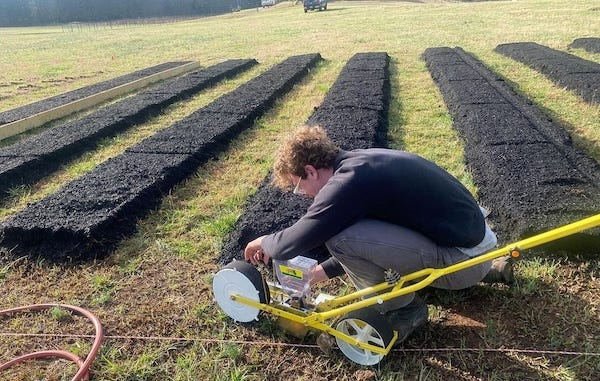

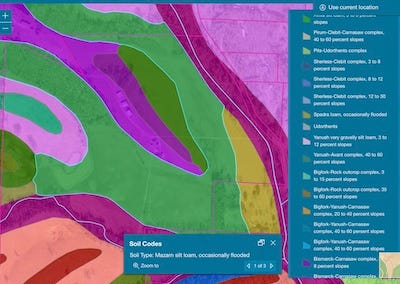
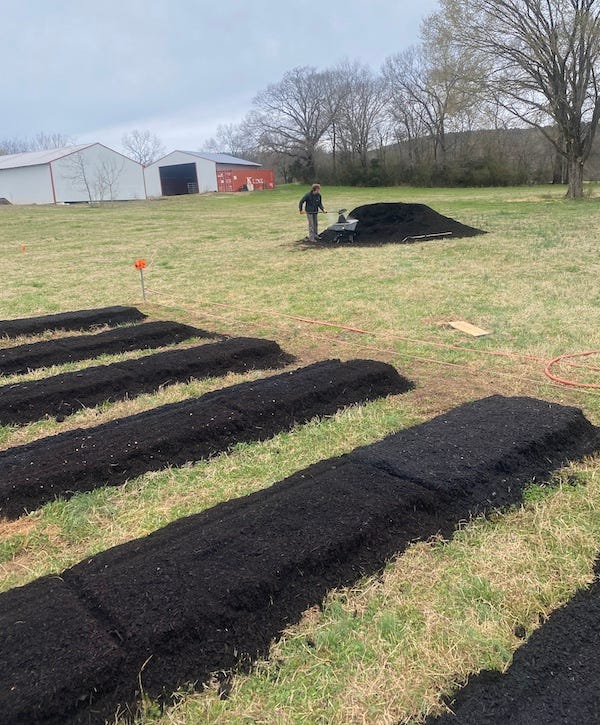

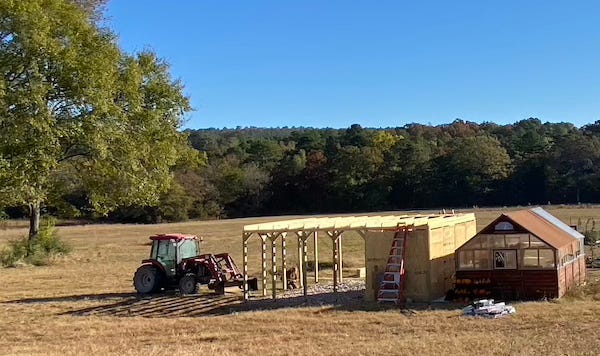
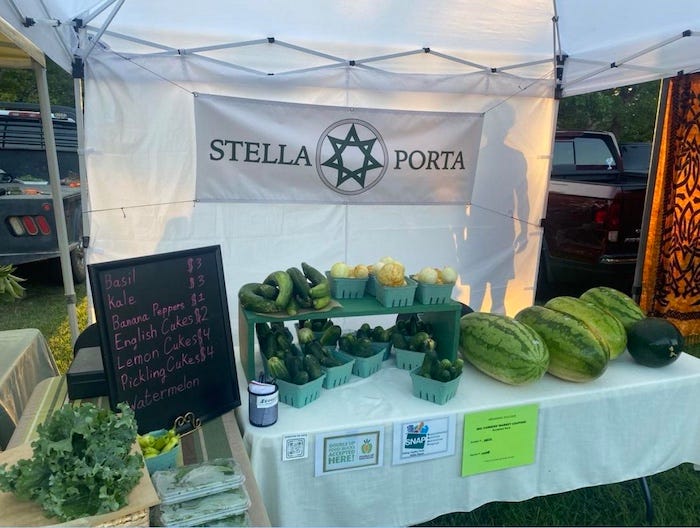
Thank’s for the “blow by blow” progress on your projects. Very interesting and informative. I love an Adventure like you, Susan, and Caleb are going through. Please keep in touch Vinnie and don’t wear yourselves out.
Wow that’s a lot of research, truly amazing what you three are doing! #SelfSustainable